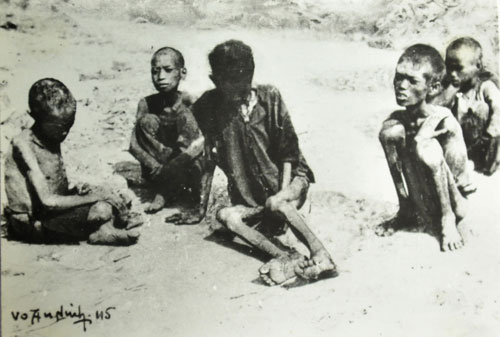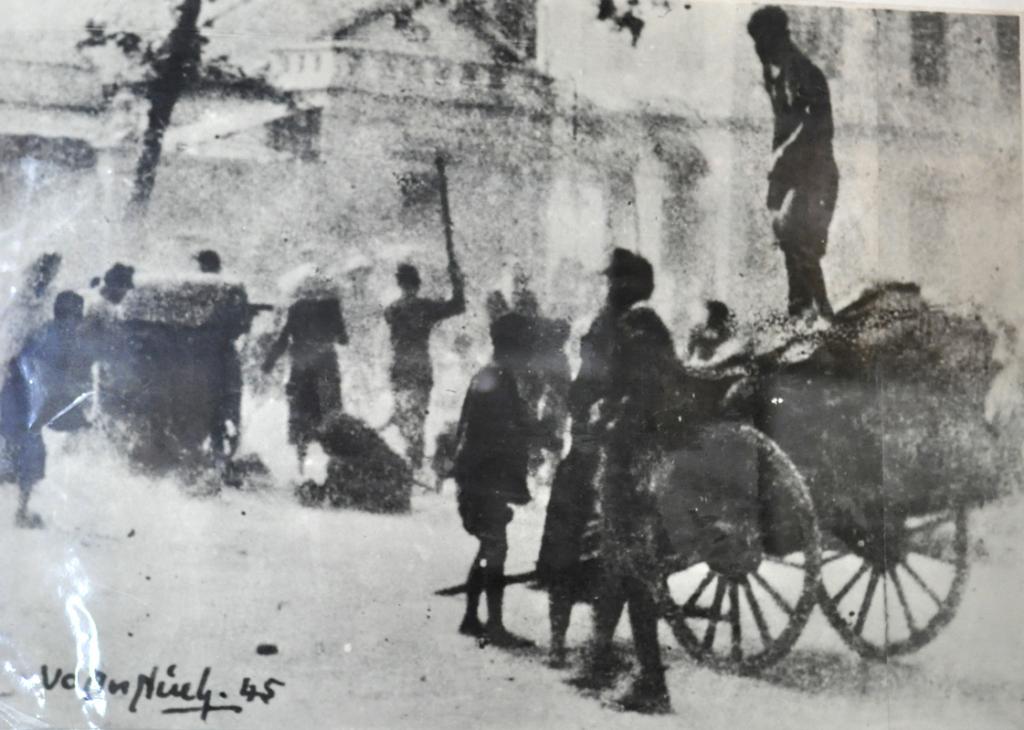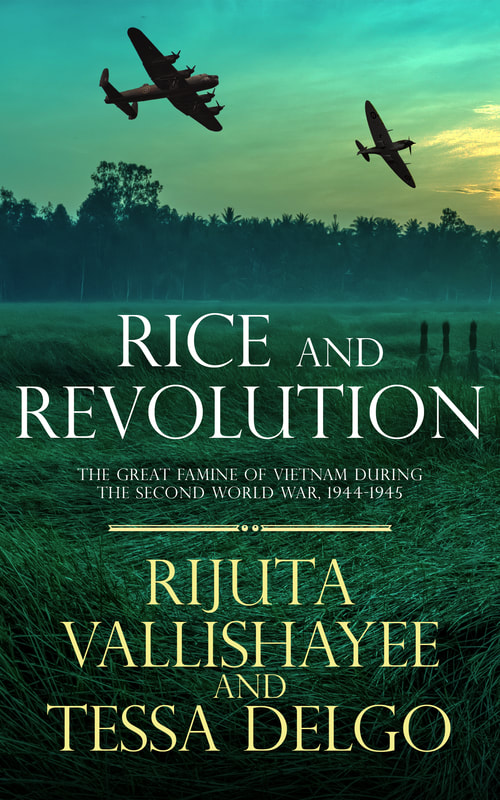- Home
- Stories
-
Internship
- Summer 2024 Internship
- Summer 2023 Internship
- Fall 2022 Internship
- Summer 2022 Internship
- Summer 2021 Internship
- Fall 2020- Spring 2021 Internship
- Summer 2020 Internship
- Fall 2019 Internship
- Summer 2019 Internship >
- School Year 2018-2019 Internship
- Summer 2018 Internship >
- Fall 2017 Internship
- Summer 2017 Internship >
- Books
- Archives
-
Resource Page
-
Supplementary Research Guides
>
- Unit 731 - Guide >
-
Philippines' Resistance - Guide
>
- Philippines World War II Timeline
- The Japanese Invasion & Conquest of the Philippines
- Bataan Death March
- Formation of Underground Philippines Resistance
- Supplies of the Guerrilla Fighters
- The Hukbalahap
- Hunter's ROTC
- Marking's Guerrillas
- United States Army Forces in the Philippines of Northern Luzon (USAFIP-NL)
- The Aetas
- Chinese and Filipino-Chinese Nationalist Guerrilla Units
- The Female Faces of the Philippine Guerrillas
- Rising Sun Flag - Guide >
- Pinay Guerrilleras - Guide >
- Fall of Singapore - Guide >
- Three Years and Eight Months - Guide >
- Siamese Sovereignty - Guide >
- The Khabarovsk War Crimes Trial - Guide >
- Unit 731 Cover-up : The Operation Paperclip of the East - Guide >
- Marutas of Unit 731 - Guide >
- Prince Konoe Memoir - Guide >
- Competing Empires in Burma - Guide >
- Battle of Shanghai - Guide >
- Ishi Shiro - Guide >
- Taiwan The Israel of the East - Guide >
- Seeking Justice for Biological Warfare Victims of Unit 731 - Guide >
- Rice and Revolution - Guide >
- Clash of Empires - Guide >
-
Hunger for Power and Self-SufficiencyI - Guide
>
- The Influence of War Rations on Post-War Culinary Transformations
- How World War II Complicated Food Scarcity and Invention
- American Military Innovations
- Government-Sponsored Food Inventions in Europe during World War II
- Feeding the Army: The Adaptation of Japanese Military Cuisine and Its Impact on the Philippines
- Mixed Dishes: Culinary Innovations Driven by Necessity and Food Scarcity
-
Denial A Quick Look of History of Comfort Women and Present Days’ Complication - Guide
>
- The Comfort Women System and the Fight for Recognition
- The Role of Activism and International Pressure
- The Controversy over Japanese History Textbooks
- The Sonyŏsang Statue and the Symbolism of Public Memorials
- Activism and Support from Japanese Citizens
- The Future of Comfort Women Memorials and Education
- Echoes of Empire: The Power of Japanese Propaganda - Guide >
- Lesson Plans >
-
Supplementary Research Guides
>
Tonkin Rice Land
Rice output in Tonkin had been falling for decades, but its population was growing. As early as the 1920s, Tonkin was teetering on the precipice of food insecurity, consuming around eighty percent of the food grown in its region, whereas Cochinchina consistently maintained a surplus. The poor in Tonkin often only ate a single meal per day and were only sufficiently fed for about four months out of the year, typically after harvests. The specter of famine always loomed—in 1937, it was narrowly avoided only by rice imports from Cochinchina’s surplus. Sugata Bose pinpoints 1943 as the year when starvation deaths began en masse in Tonkin, but the worst phase lasted from May 1944 until March 1945.
The years 1941-44 saw the conversion of an unspecified quantity of Tonkin rice land to industrial crops such as jute and castor oil seed. Natural crises added another layer of hardship—drought and insects decreased the spring 1944 rice harvest by nineteen percent compared to the spring 1943 crop, and on top of it all, a string of typhoons ruined the rice crop that would have been harvested in the autumn of 1944. Tonkin farmers were forced to sell much of what little viable rice was left over to the colonial government, leaving them with nothing to feed themselves or their families.
By December 1944, many peasants in Tonkin and northern Annam were forced to subsist on anything that was available: rice husks, banana tree roots, clover, and tree bark. Most Tonkin peasants had typically relied on purchasing imported clothing, as Vietnam produced very little of its own textiles, but Japan had sent almost none after the onset of World War II. Combined with the particularly cold winter that year, a large number of rural Tonkinites tried to escape to larger towns and cities where there might have been more available resources, but many died on the journey.
The years 1941-44 saw the conversion of an unspecified quantity of Tonkin rice land to industrial crops such as jute and castor oil seed. Natural crises added another layer of hardship—drought and insects decreased the spring 1944 rice harvest by nineteen percent compared to the spring 1943 crop, and on top of it all, a string of typhoons ruined the rice crop that would have been harvested in the autumn of 1944. Tonkin farmers were forced to sell much of what little viable rice was left over to the colonial government, leaving them with nothing to feed themselves or their families.
By December 1944, many peasants in Tonkin and northern Annam were forced to subsist on anything that was available: rice husks, banana tree roots, clover, and tree bark. Most Tonkin peasants had typically relied on purchasing imported clothing, as Vietnam produced very little of its own textiles, but Japan had sent almost none after the onset of World War II. Combined with the particularly cold winter that year, a large number of rural Tonkinites tried to escape to larger towns and cities where there might have been more available resources, but many died on the journey.
Starving Vietnamese children. Wikipedia
The number of casualties from the famine came to a zenith during the spring of 1945 that preceded the June rice harvest. Amid this, on March 9 the French colonial government encountered a coup de force by the Japanese, who feared a French colonial uprising against them as their power in the war waned. French general Charles de Gaulle, leader of the Free France movement against the Nazi government in World War II, had hoped against, but still anticipated, a challenge to the Indochina colonial administration. However, de Gaulle wound up attempting to employ the coup to gain political power, as this Franco-Japanese tension proved that the Nazi-collaborating Vichy France state had truly fallen, shielding French resistance fighters from residual Allied criticisms. On March 24, de Gaulle issued a declaration of condemnation about the coup, attempting to assure the people of Indochina that France was fighting for them—that they stood in solidarity.
However, on the other side, Imperial Japan had quickly announced their seizure of power, and the Vietnamese were reveling in France’s public humiliation. Japan promised to support Vietnamese moves towards autonomy, and even actively encouraged Vietnamese emperor Bảo Đại to declare independence, but left the details of what ‘independence’ entailed vague.
However, on the other side, Imperial Japan had quickly announced their seizure of power, and the Vietnamese were reveling in France’s public humiliation. Japan promised to support Vietnamese moves towards autonomy, and even actively encouraged Vietnamese emperor Bảo Đại to declare independence, but left the details of what ‘independence’ entailed vague.
August Floods
Although the worst waves of the famine were subsiding by August 1945, when the Viet Minh took over and established the Democratic Republic of Vietnam, the north’s food supply was once again threatened by natural disaster. Several breaks in the Red River’s dikes flooded more than 300,000 hectares of rice fields, resulting in a loss of about one-third of the crop that would have been harvested in November. A large-scale emergency response began quickly, as the nascent government of the establishing Democratic Republic of Vietnam faced an early leadership test in their ability to rehabilitate the dike system and stymie the numbers of starvation casualties. A successful campaign to grow corn, yams, and beans to mitigate the effects of the lost rice reflected positively on their ability to govern but could not fully compensate for the region’s losses. Additional measures were taken to transport some of the south’s rice surplus to the suffering north. Revolutionary committees developed militaristic defense plots to protect ships carrying rice northward, but they were met with bureaucratic obstacles, largely caused by French officials refusing to aid or defer to Vietnamese jurisdiction. Although relief efforts continued, confidential Democratic Republic of Vietnam records recorded at least 11,458 deaths from starvation as a result of the August floods.
Vietnamese villagers attacking a rice warehouse built by Japanese forces, 1945. Wikipedia
It was not until June 1946 that the threat of mass famine began to dissipate, aided by good weather and a plentiful summer harvest. Finally, in November 1946, the north enjoyed a bountiful rice crop and the danger of mass famine had all but vanished. Opinions about the primary cause of the famine vary among historians, however, it is universally agreed that a triumvirate of consequences from French colonization, Japanese imperialism, and natural disaster combined to make the famine the catastrophe that it was. The next chapter will examine the different influences and their impact on the famine, as well as the legacy that the famine left on Vietnam and its people and how it is studied and remembered today.
Related Book
Rice and Revolution
|
The Portents of Famine |
Legacy of the 1944-45 Vietnam Famine |
|
Pacific Atrocities Education
730 Commercial Street San Francisco, CA 94108 415-988-9889 |
Copyright © 2021 Pacific Atrocities Education.
We are a registered 501 (c)(3) charity. |
- Home
- Stories
-
Internship
- Summer 2024 Internship
- Summer 2023 Internship
- Fall 2022 Internship
- Summer 2022 Internship
- Summer 2021 Internship
- Fall 2020- Spring 2021 Internship
- Summer 2020 Internship
- Fall 2019 Internship
- Summer 2019 Internship >
- School Year 2018-2019 Internship
- Summer 2018 Internship >
- Fall 2017 Internship
- Summer 2017 Internship >
- Books
- Archives
-
Resource Page
-
Supplementary Research Guides
>
- Unit 731 - Guide >
-
Philippines' Resistance - Guide
>
- Philippines World War II Timeline
- The Japanese Invasion & Conquest of the Philippines
- Bataan Death March
- Formation of Underground Philippines Resistance
- Supplies of the Guerrilla Fighters
- The Hukbalahap
- Hunter's ROTC
- Marking's Guerrillas
- United States Army Forces in the Philippines of Northern Luzon (USAFIP-NL)
- The Aetas
- Chinese and Filipino-Chinese Nationalist Guerrilla Units
- The Female Faces of the Philippine Guerrillas
- Rising Sun Flag - Guide >
- Pinay Guerrilleras - Guide >
- Fall of Singapore - Guide >
- Three Years and Eight Months - Guide >
- Siamese Sovereignty - Guide >
- The Khabarovsk War Crimes Trial - Guide >
- Unit 731 Cover-up : The Operation Paperclip of the East - Guide >
- Marutas of Unit 731 - Guide >
- Prince Konoe Memoir - Guide >
- Competing Empires in Burma - Guide >
- Battle of Shanghai - Guide >
- Ishi Shiro - Guide >
- Taiwan The Israel of the East - Guide >
- Seeking Justice for Biological Warfare Victims of Unit 731 - Guide >
- Rice and Revolution - Guide >
- Clash of Empires - Guide >
-
Hunger for Power and Self-SufficiencyI - Guide
>
- The Influence of War Rations on Post-War Culinary Transformations
- How World War II Complicated Food Scarcity and Invention
- American Military Innovations
- Government-Sponsored Food Inventions in Europe during World War II
- Feeding the Army: The Adaptation of Japanese Military Cuisine and Its Impact on the Philippines
- Mixed Dishes: Culinary Innovations Driven by Necessity and Food Scarcity
-
Denial A Quick Look of History of Comfort Women and Present Days’ Complication - Guide
>
- The Comfort Women System and the Fight for Recognition
- The Role of Activism and International Pressure
- The Controversy over Japanese History Textbooks
- The Sonyŏsang Statue and the Symbolism of Public Memorials
- Activism and Support from Japanese Citizens
- The Future of Comfort Women Memorials and Education
- Echoes of Empire: The Power of Japanese Propaganda - Guide >
- Lesson Plans >
-
Supplementary Research Guides
>


